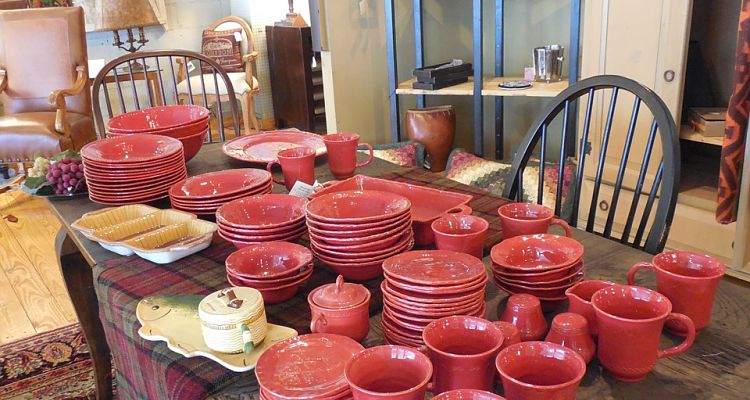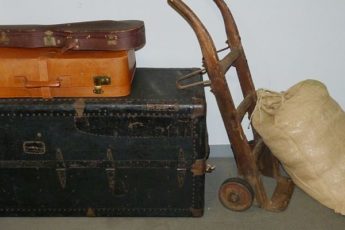
Moving isn’t any fun. There is just something about uprooting everything, even if it is just to move across town, that is so hard on the mind and body. Packing is where the whole moving journey begins, and when we are packing is usually when reality sets in that this move is actually going to happen.
Do not give in to the moving blues! Sometimes just a tiny adjustment in our approach and attitude toward packing will make all the difference. After years and years of moving here, are some professional packing tips on how to make packing a little less stressful.
Sooner Rather Than Later
Starting the packing process early is a great way to reduce stress during a move. Some people wait for a confirmed moving date, while others feel less stressed by starting as soon as they decide to move. Reducing stress starts with breaking the task into smaller, manageable steps. Taking on small tasks, like packing one drawer or a few items each day, can help prevent feelings of being overwhelmed. This gradual approach lowers last-minute pressure and builds a sense of accomplishment as you see steady progress.
To reduce stress, start by packing non-essential items like seasonal clothing, books, or decorations. This helps you feel more in control and keeps your daily routine steady until the final stages of the move. Use a checklist to track your progress and label boxes to stay organized, reducing stress when searching for essentials later. Remember, packing is about being prepared and staying calm. Each small step reduces stress as moving day gets closer.
Pack with Friends and Family
Doing tasks with friends and family can make moving less stressful and even enjoyable. Asking loved ones to help pack lightens the mood and turns an overwhelming task into a shared experience. Laughter and conversation ease tension, and extra help gets tasks done faster. Use this time to reminisce about items, turning a chore into a chance for connection and storytelling.
To reduce stress, plan ahead when involving outside help. Assign simpler tasks, like packing non-fragile items or organizing books, to friends, family, or hired help. This saves time and avoids frustration from explaining detailed packing preferences. For items you care about, like valuables or fragile pieces, it’s often less stressful to pack them yourself. Label boxes with instructions like “fragile” or “this side up” to help helpers and keep the process stress-free for everyone.
Pack Sentimental Items Without Emotional Overload
Packing sentimental items, like family photos, childhood mementos, or gifts from loved ones, can be one of the most emotional parts of moving. To make the process less overwhelming, group these items into categories that feel meaningful to you, such as by family member, occasion, or type of item. This helps create a sense of order and keeps you focused as you work. Use sturdy boxes and protective materials like bubble wrap, tissue paper, or soft cloths to protect fragile items. Label each box clearly with its contents and emotional significance, making it easy to locate and prioritize these items when unpacking.
To keep the process stress-free, set aside a specific time to focus only on sentimental belongings. Try not to spend too long reminiscing over individual items, as this can slow your progress and leave you emotionally drained. If an object stirs strong feelings, consider photographing it to preserve its memory before packing it away. For items you rarely use but want to keep, create a “memory box” to store them compactly while ensuring they stay safe. This approach allows you to honor the emotional value of your belongings while staying organized and in control. It also reduces stress and ensures your treasured items arrive at your new home in perfect condition.
Throw a Packing Party
Turning packing into a social event with a “pizza and beer” party can make the process less stressful and more fun. A packing party motivates friends and family to help and gives you a chance to spend time with loved ones, especially if you’re moving far away. It can also serve as a casual goodbye, allowing everyone to share laughs, stories, and memories before you leave. Sharing food, drinks, and laughs while working together lightens the mood and makes the process feel less like work. It’s a great way to turn an exhausting day into a fun and memorable experience.
A packing party might not work well if you’re specific about how items are organized. To balance tasks, ask guests to pack non-fragile items like books, linens, or pantry staples, while you handle delicate or valuable items. Give clear instructions and have supplies like boxes, tape, and markers ready to keep the event running smoothly. If beer and pizza are part of the fun, save critical packing tasks for later so everyone can relax without worry. A packing party isn’t just about getting things done; it blends productivity with connection, leaving you with great memories and a heartfelt goodbye before moving.
Rock Out While You Pack
Music can be a game-changer when it comes to making packing less stressful and more enjoyable. Blasting some upbeat tunes while you work can boost your mood, energize you, and make the time fly by. Whether you prefer funky grooves, nostalgic throwbacks, or motivational playlists, the right music can turn packing into a fun and engaging activity. It’s a great way to stay motivated and focused, especially during tasks that might otherwise feel monotonous.
If you have musical instruments and plan to move them, this is a great opportunity to enjoy their sound one last time in your current space while ensuring they are safely packed. For instance, you can play a few tunes on your guitar to keep the vibe upbeat before carefully packing it in a padded case. For larger instruments like pianos or drum kits, take a moment to appreciate their presence in your home before disassembling or wrapping them securely. Be sure to loosen stringed instruments slightly to prevent tension damage during transport, and use bubble wrap or specialized covers to protect delicate parts. Clearly label these items so movers or you know to handle them with extra care.
This can also be a meaningful way to say goodbye to your current home and reflect on the moments shared there, especially if music has been a big part of your life. Balance is key. A little dancing or jamming between boxes can relieve stress, but it is important to stay mindful of your productivity. Create a playlist with high-energy songs for packing momentum and mellow tracks to help you focus during more delicate tasks. If you are tackling a big packing session, use music as a timer.
For example, aim to finish a section by the end of a playlist or album. Packing does not have to feel like a chore. With the right soundtrack, some time to appreciate your instruments, and a moment to reflect, it might just become your most memorable moving experience.
Pack One Room at a Time
Staying organized is one of the easiest ways to reduce the stress of packing. A room-by-room approach helps you break the process into manageable steps, making it feel less overwhelming. Start with the spaces you use the least, such as the dining room, guest bedrooms, or storage areas, and pack these first. These areas usually contain items you won’t need until after the move, allowing you to get a head start without disrupting your daily routine. Clearing these less-used spaces early also creates room for storing packed boxes, keeping the rest of your home tidy as you work.
As moving day gets closer, focus on the rooms you use the most, like the kitchen or your bedroom. Packing these spaces last ensures you still have access to essentials, helping you avoid disruptions to your comfort and routine. To keep stress levels low, use clearly labeled boxes and set aside one or two “essentials boxes” for items you’ll need right away after the move, like toiletries, basic kitchen supplies, and a few changes of clothing. By tackling one room at a time and planning ahead, you can stay organized and avoid the chaos of last-minute packing.
Things You Should Not Pack
Moving can feel overwhelming, especially as the big day gets closer. It is easy to start hurriedly tossing items into boxes just to clear out your space. However, this rushed approach can cause unnecessary stress later. You might realize you packed things you do not need or struggle to find essentials during the move. A mindful and strategic approach to packing can help you stay organized and reduce stress as the deadline approaches.
One way to pack effectively is to divide items into three categories: what to bring, what to leave behind, and what to keep accessible. Avoid packing hazardous materials, such as cleaning supplies or flammable items, since most moving companies will not transport them. Donate or discard things you no longer need to lighten your load and make unpacking easier. At the same time, set aside a “moving essentials bag” with important documents, medications, chargers, snacks, and basic toiletries. These are things you will need quick access to during the transition. Taking a few extra steps to plan ahead can help you avoid unpacking chaos and make the moving process smoother.
Cleanse
Packing is a great opportunity to clear out items you no longer want or need, turning a stressful task into a refreshing reset. Decluttering as you pack reduces the number of items to move, making the process easier and freeing up space in your new home. Start by sorting your belongings into three categories: donate, sell, or discard. Items in good condition, like clothing, furniture, or kitchenware, can be donated or sold, while broken or unusable items should be responsibly disposed of.
Decluttering lightens your load and also gives you a sense of accomplishment and clarity as you prepare for your move. To keep things stress-free, focus on one room at a time and prioritize items you haven’t used in months or forgot you even had. Ask yourself if each item serves a purpose or makes you happy; if it doesn’t, it is time to let it go. This process not only reduces the effort and cost of moving but also ensures your new home is filled only with things that truly matter to you.
View it as a Workout
Moving often disrupts routines, and for many, exercise is one of the first things to go. However, packing and moving can be surprisingly active tasks, so why not treat them as part of your workout routine? Lifting boxes, carrying items, and bending or stretching to pack all keep you moving and can burn calories. By approaching packing with a fitness mindset, you can stay physically active while checking items off your to-do list.
To make this even more effective, add intentional movements to your packing process. Squat when lifting heavier boxes, take the stairs whenever you can, and include stretches to loosen up between tasks. Use a fitness tracker or smartwatch to count your steps and track your activity, making moving day feel like a built-in workout challenge. Stay hydrated and take breaks to rest your muscles, which will help you stay energized and avoid fatigue. Instead of seeing packing as a stressful chore, think of it as a way to stay active and boost your health during this busy time.
Reward Yourself
Rewarding yourself can be a powerful motivator to make packing less stressful and more enjoyable. Let’s face it, packing isn’t everyone’s idea of fun, but giving yourself something to look forward to can make the process much easier to handle. Break your packing into manageable sessions and treat yourself afterward with something you love. Whether it is a piece of chocolate, your favorite show, or a relaxing bath, these small rewards can keep you energized and motivated to tackle the next task.
For longer-term motivation, plan a bigger reward, like a special dinner or a weekend getaway, to celebrate after the move is done. Visualizing this reward can give you the push you need when the process feels overwhelming. To stay organized and motivated, set clear goals, such as finishing one room or packing a certain number of boxes, and tie the reward to achieving them. Packing is hard work, and taking time to acknowledge your efforts with meaningful rewards helps keep stress under control and makes the process something you can feel good about.
Post-Packing Recovery Plan to Recharge
Packing can be both mentally and physically exhausting, but having a simple recovery plan can make a big difference in reducing stress and keeping your energy up. Take regular breaks to step outside for a short walk to clear your mind and loosen any physical tension. If you prefer to stay indoors, treat yourself to small comforts like a favorite snack, a warm drink, or a quick 15-minute nap. These moments of rest help you recharge and return to packing with renewed focus and energy.
To stay balanced throughout the process, schedule downtime after reaching major packing milestones. Use this time to reward yourself with relaxing activities, like watching a favorite show, listening to calming music, or enjoying a warm bath. Set up a clutter-free corner in your home as a relaxation zone where you can recharge in peace. Adding small acts of self-care into your packing routine not only prevents burnout but also helps you stay positive and ready for moving day. By prioritizing your well-being, the entire process will feel far less stressful and much more manageable.
Stress-Free Packing: 5 Do’s and 5 Don’ts
Do’s
Use Transparent Storage Bins for Key Items
Clear bins can hold items you’ll need immediately after unpacking, such as tools, chargers, or essential toiletries. Seeing what’s inside without having to open boxes saves time and reduces the stress of searching.
Create a Packing Station
Dedicate one area of your home to packing supplies, including boxes, tape, labels, and markers. This keeps your workflow organized, reduces distractions, and helps you pack faster without misplacing essentials.
Pack an “Emergency Kit” for Moving Day
Include things like snacks, bottled water, medications, a first-aid kit, and basic cleaning supplies. This prevents unnecessary stress if you need quick access to essentials during or immediately after the move.
Bundle Cords and Electronics in Labeled Bags
Use zip-top bags or cable organizers for cords, remotes, and small electronics, and label them. This saves frustration when setting up devices in your new home.
Take Photos Before Disassembling Furniture or Electronics
Snap pictures of wiring setups, hardware placement, or assembled furniture. These references make reassembly much easier and reduce guesswork later.
Don’ts
Don’t Pack Heavy Items in Large Boxes
Overloading big boxes with heavy items like books makes them harder to lift and increases the risk of injury or damaged items. Use smaller boxes for weighty items and save larger ones for lighter belongings.
Don’t Forget to Declutter Before Packing
Avoid boxing up things you no longer need or use. Packing unnecessary items adds to your workload and increases stress when unpacking in your new home.
Don’t Leave Important Documents Unprotected
Pack essential paperwork, like IDs, passports, and contracts, in a waterproof folder. Losing or damaging critical documents during the move can cause significant stress.
Don’t Overlook Box Weight Limits
Avoid using flimsy boxes for heavy or fragile items. This prevents spills or damage during transport and reduces the chaos of unpacking.
Don’t Procrastinate Labeling Boxes
Skipping labels might seem like a time-saver, but it creates unnecessary stress when you can’t locate items later. Take a few seconds to clearly mark each box with its contents and destination room.
Packing doesn’t have to feel overwhelming. By taking small, intentional steps, staying organized, and using the right tools and support, you can turn a stressful process into a manageable and even rewarding experience. With these strategies, you will be better prepared to handle your move with confidence and ease.




Leave a Comment